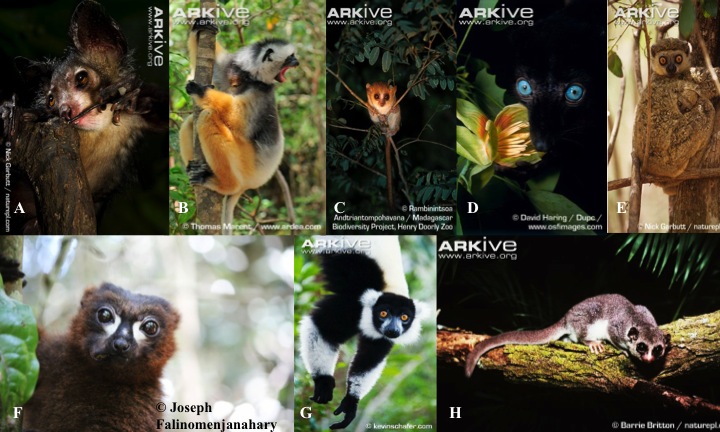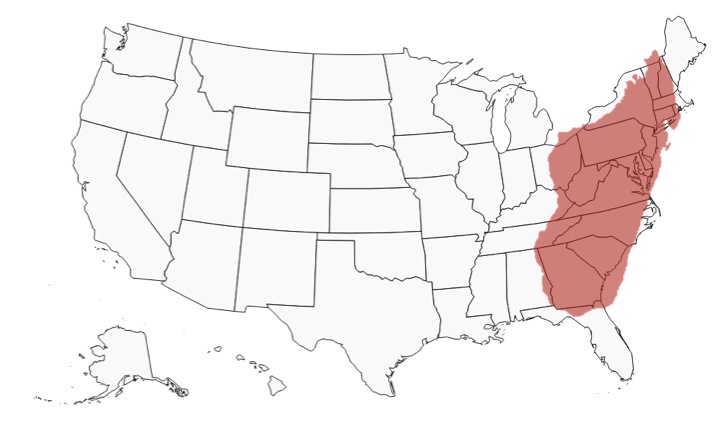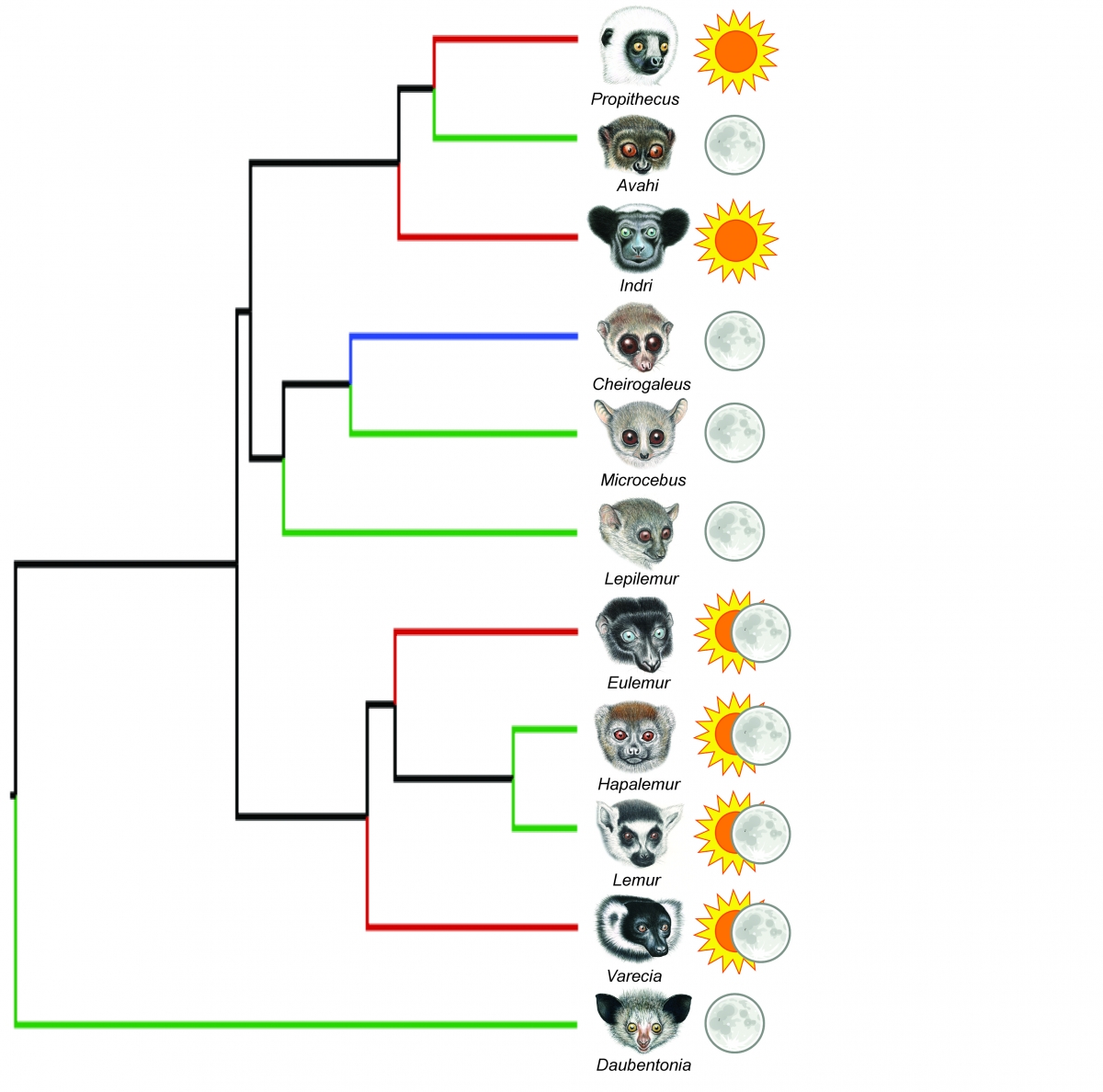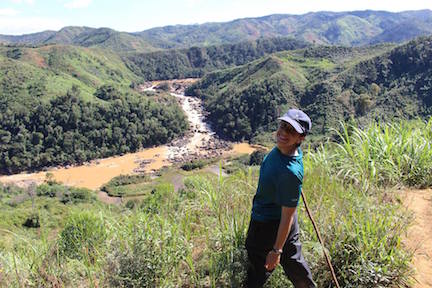“It is not the strongest of the species that survive, nor the most intelligent,
but the one most responsive to change.”
– Charles Darwin
In early April of 2017, I found myself alongside lab-mate Elaine Guevara, at the Smithsonian National History Museum for the program ‘Scientists Are In’. We focused our activities on how we combine lab work with fieldwork to study wild lemur populations. Yet, some people were confused. We were, after all, standing in the middle of the Hall of Human Origins. Lemurs, part of the Strepsirrhine clade, are humans’ most distant living primate relatives. People kept asking: “Why lemurs? What can lemurs tell us about human evolution?”
It is a question I’ve received before when I tell people I am in a Human Paleobiology program and that I study lemurs. My family has asked, faculty have asked, and once – even a Lyft driver. I tell them, and will explain soon, that lemurs offer an exciting and unique window into human evolution, because they have something that is unprecedented in all other living primate clades of comparable size – diversity (Fig. 1).

FIGURE 1
(A) Aye-aye; (B) Diademed sifaka; (C) Madame Berthe’s mouse lemur; (D) Blue-eyed black lemur, male; (E) Western wolly lemur; (F) Red-bellied lemur; (G) Black-and-white ruffed lemur; (H) Fat-tailed dwarf lemur.
Over the past ~60,000 years, modern humans have successfully dispersed and colonized a variety of environments outside of Africa. Arguments have been made that the best evidence for this adaptive evolution lies within our skin. I argue that the diversity in our hair, in our eye color, in our ability to see color, and in our overall body structures are also windows into our adaptability. These are all facets of our observable traits, or our phenotypes. These phenotypes reflect adaptations to various environmental conditions, like climate, and are influenced by our genes. Genetic mutations in the Tibetan genome recently revealed adaptations for higher altitudes, which has resulted in higher body mass. We also now know that climatic fluctuations might have played a role in human evolution. The ability to exploit a variety of different habitats and environments is a distinguishing feature for successful groups of organisms – notably humans.
Similarly, lemurs have adapted to a variety of habitats throughout the island of Madagascar, and have also developed a suite of diverse observable traits. The central plateau of Madagascar splits the country (the largest oceanic island) into dry forests (e.g. dry deciduous forests, spiny forests, and limestone formations), tropical moist forests (e.g. coastal, montaine, and lowland rainforest), wetlands, and a central plateau. In fact, Madagascar is so large and so unique that it has been dubbed the 8th continent. If placed next to the United States, it would span over a large area of the east coast (Fig. 2). The diversity of ecological settings and niche’s available for lemurs to exploit may have helped lemurs evolve environment-specific adaptations and likely colored their patterns of speciation.

FIGURE 2
Madagascar scaled, approximately, to the east coast of the United States
Lemurs number approximately ~200 species and experience differences in a variety of traits, including (but not limited to!):
- metabolic state (e.g. no torpor, daily torpor, seven months of torpor)
- body size (e.g. 30 grams to > 7000 g)
- feeding/hunting behavior (e.g. insectivores, folivores, frugivores)
- activity patterns (e.g. nocturnal, dirurnal, and cathermal) (Fig. 3)
- color vision (e.g. full to red-green colorblind), and
- hair color and pattern (e.g. fully melanistic, fully white, patterned coats)

FIGURE 3
Lemur color vision and activity pattern mapped on to a limited phylogeny. (KEY: blue = polymorphic trichromacy, green = dichromacy, red = monochromacy); sun = diurnal, moon = nocturnal, sun & moon = cathermal). Figure courtesy of Rachel Jacobs et al. 2016 and drawings courtesy of Stephen Nash.
In contrast to lemurs though, humans are only one species, and not a very genetically diverse species at that. Yet, over the evolutionary past, diversity in the hominin lineage and extinct Miocene apes was a common thread. During the Miocene (22 to 5.5 Mya), roughly 100 species of apes lived throughout a vast region (France, China, to Kenya and Namibia). Like lemurs, they had a myriad of traits that allowed them to range over various habitats. The Miocene era has been referred to as the time of adaptive radiation for the apes – and specimens show diversity in size and feeding adaptations.
An adaptive radiation is when a group of organisms evolve new forms of traits to exploit new environmental niches (i.e. the role of an organism in it’s environment). Similar to the Miocene apes, the lemurs represent the largest most diverse form of an adaptive radiation of living primates. Evolution can be arduous to observe because historical events that influence evolution are inherently varied, but adaptive radiations present replicates and controls that help scientists.
While an argument can be made against lemurs for the fact that they evolved on a constrained island habitat, some of the most informative evolutionary biology studies have been on islands or of isolated pockets of organisms – anolis lizards, cichlids, and of course the Galapagos finches. Charles Darwin, after observing finches on the Galapagos Island, concluded that the variety of observable traits (e.g. beak sizes) exhibited by finches were an adaptation to different niches. Lemur evolution, thus, presents us with a unique opportunity to glimpse into evolutionary processes and mechanisms that may have also influenced hominin evolution (including the Miocene apes and modern humans).Armed with this knowledge, I decided to focus my Ph.D. research on lemurs and to travel to Madagascar this past summer. Through collaboration with Drs. Mitch Irwin and Karen Samonds (Sadabe), I collected pilot data from diademed sifakas at the Tsinjoarivo forest. Since the forest is still unprotected, it’s common to encounter ‘tavy’ (i.e. slash and burn agriculture).
This is disheartening, because although lemurs offer a unique insight (as a model) into human evolution, 87% of lemur species are threatened with extinction and 100% of their populations are in decline. The most iconic lemurs, the ring-tailed lemurs, are also quickly disappearing. Concerns only increase amidst the rising number of new lemur species. Deforestation has changed the landscape of Madagascar, and the threats mount with the 'sapphire rush' threatening the already variable eastern rainforest (i.e. variations in temperature, climate, and altitudes). While lemurs may be adapted to a range of habitats, they are also racing against the clock of rapid forest depletion. Once Madagascar’s forests disappear, the lemurs will disappear, and once we loose the lemurs we close our last open window into this unique and diverse evolution of primates.
Special thanks to: Dr. Brenda Bradley, Elaine Guevara, Dr. Rachel Jacobs, Adam Fishbein, Joseph Falinomenjanahary, Stephen Nash and ARKIVE. And for introducing me to Madagascar’s most amazing lemurs while keeping me safe: Dr. Mitch T. Irwin, Dr. Karen E. Samonds, Dr. Karine Lalaina, and Jean-Luc Raharison.


